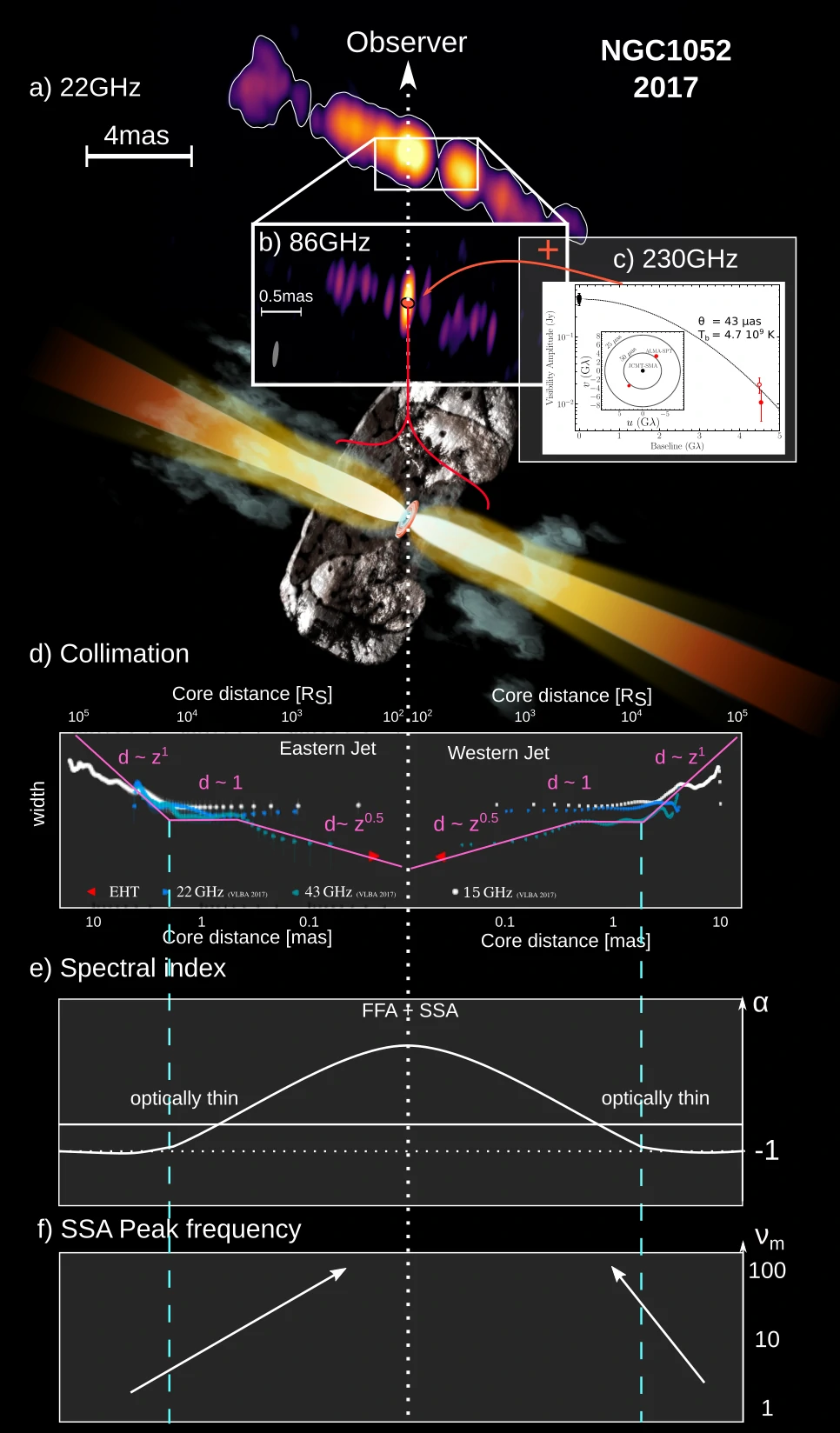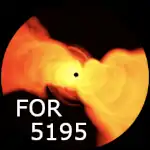18.12.2024:
Research-unit scientists lead by Anne-Kathrin Baczko have significantly contributed to an unprecedented detection of the very nucleus of the nearby low-ionisation nuclear emission-line region (LINER) galaxy NGC 1052. Despite its comparatively weak mm emission and the obscuring molecular torus, the jet launching and acceleration region within 1 pc from the central supermassive black hole was detected with the very-long-baseline interferometers EHT (Event Horizon Telescope), GMVA (Global millimeter VLBI Array) and VLBA (Very Long Baseline Array) during simulations observations in 2017.

The bipolar relativistic jets of NGC 1052 were imaged with the VLBA at 22 GHz (picture a) and with the GMVA at 86 GHz (insert picture b). The visibility plot of the EHT (picture c) motivates further observation campaigns of NGC 1052 in the future.
The background depiction illustrates our understanding of active galactic nuclei like NGC 1052: A central black hole accretes magnetic field and ionised matter in a disk. The twisting of the magnetic field lines in the rotating spacetime causes outflows of electromagnetic radiation and particles, forming the relativistic jets. The central region is surrounded by a toroidal structure, complicating observations at other wavelength regimes.
From the imaged jet, the collimation profile of the bipolar jet has been extracted (picture d). Being optically thick due to free-free absorption and synchrotron self absorption in the launching region, the jet emanates from the central region with a parabolic shape, transitions to a cylindrical form at 3 × 103 RS, and changes to a conical profile at 1 × 104 RS, where it also becomes optically thin (picture e). In accordance with theoretical expectations, the peak of the synchrotron-self-absorbed spectrum shifts to higher (lower) frequencies, the closer (farther) from the core one measures (picture f).
From the spectrum of the detected radiation, the scientists could also measure the magnetic field in the surroundings of the central engine, and estimate the magnetic field at the black hole’s event horizon to be 2.6 T.
Original research paper: “The putative center in NGC 1052”, A.-K. Baczko, et al., 2024, Astronomy & Astrophysics 692, A205
Parallel press releases:
from Chalmers University of Technology Göteborg
from Julius-Maximilians-Universität Würzburg (in German language)
from Max-Planck-Institut für Radioastronomie Bonn
from Universitat de València
DFG Research Unit (Forschungsgruppe) FOR 5195 – Relativistic Jets in Active Galaxies
Funded by the Deutsche Forschungsgemeinschaft (DFG, German Research Foundation)
